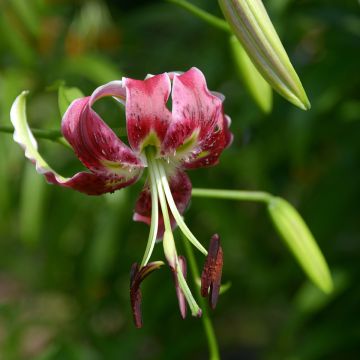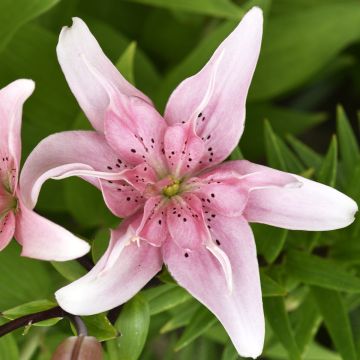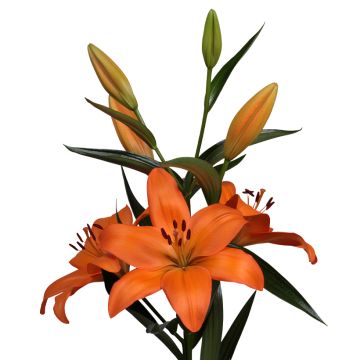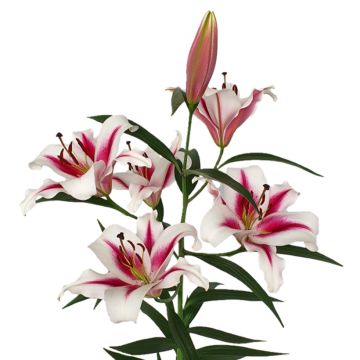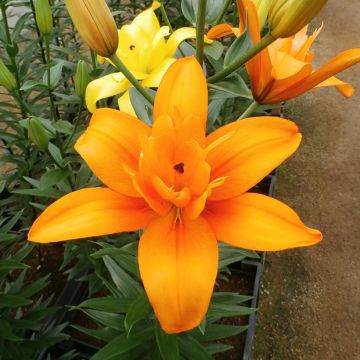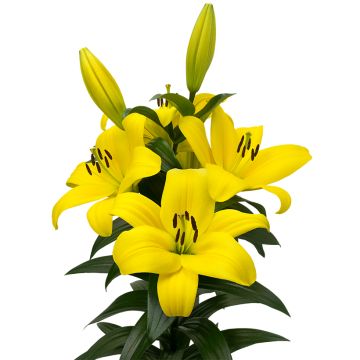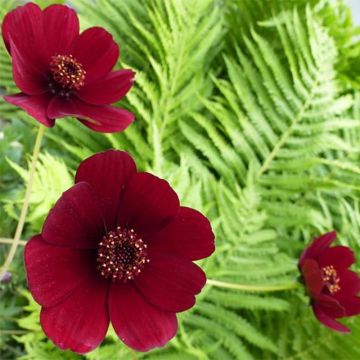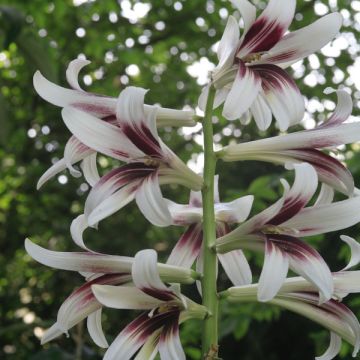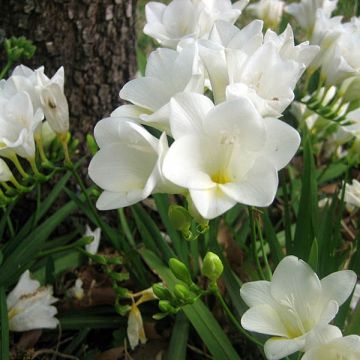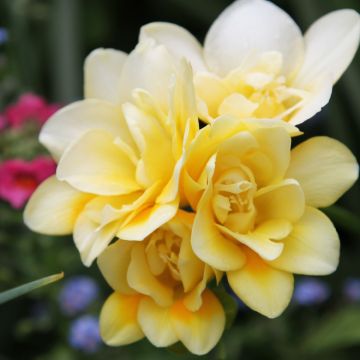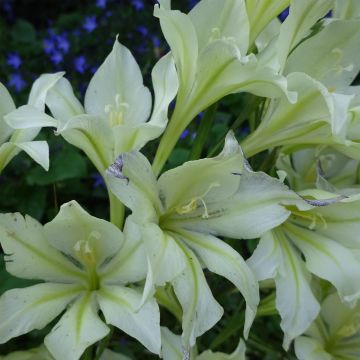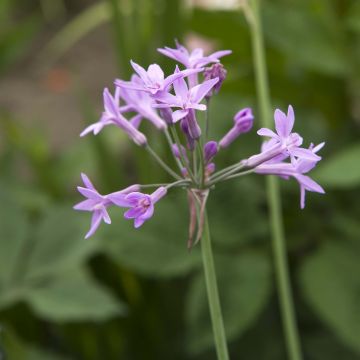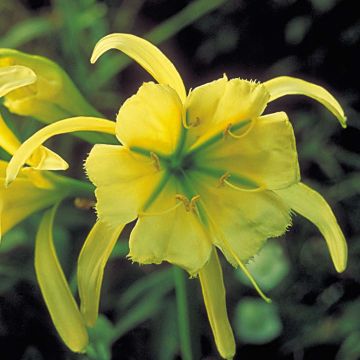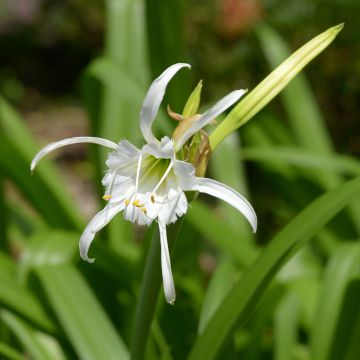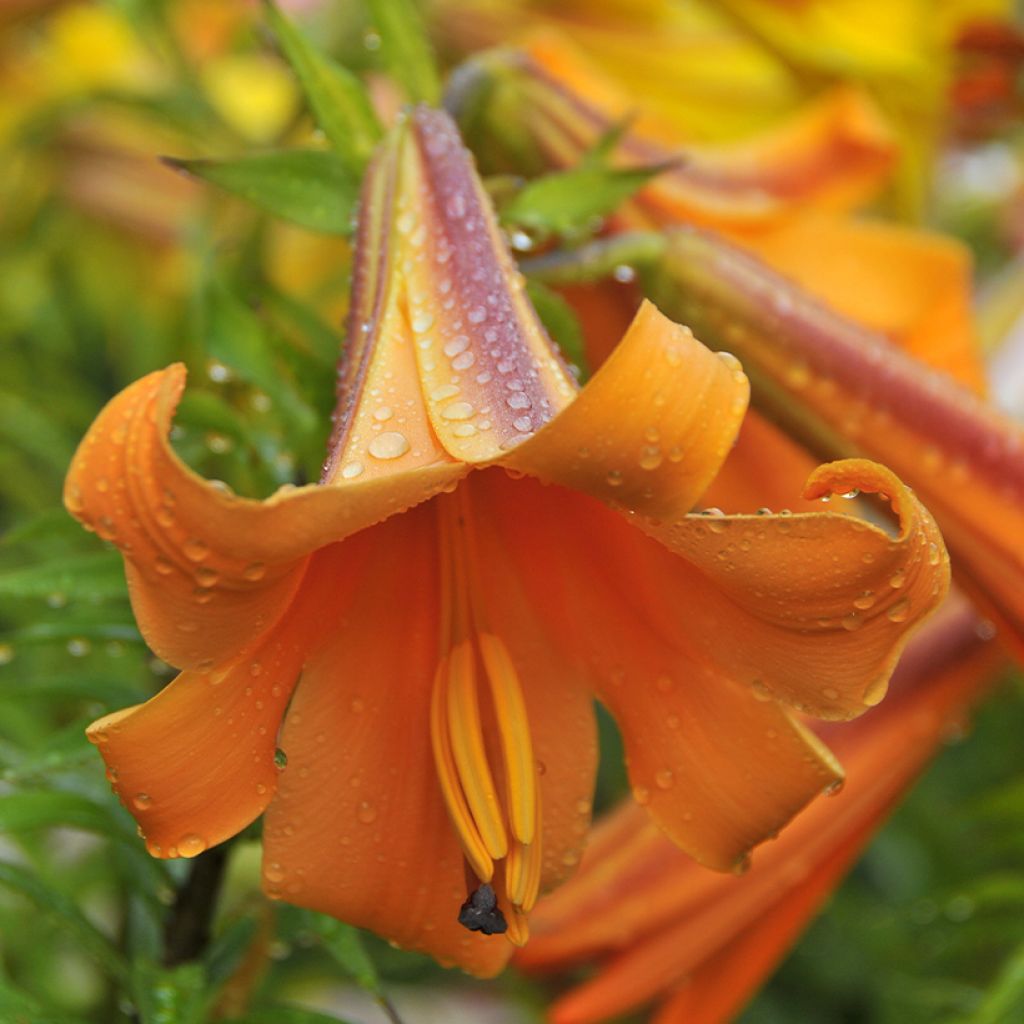

Lis trompette - Lilium x regale African Queen
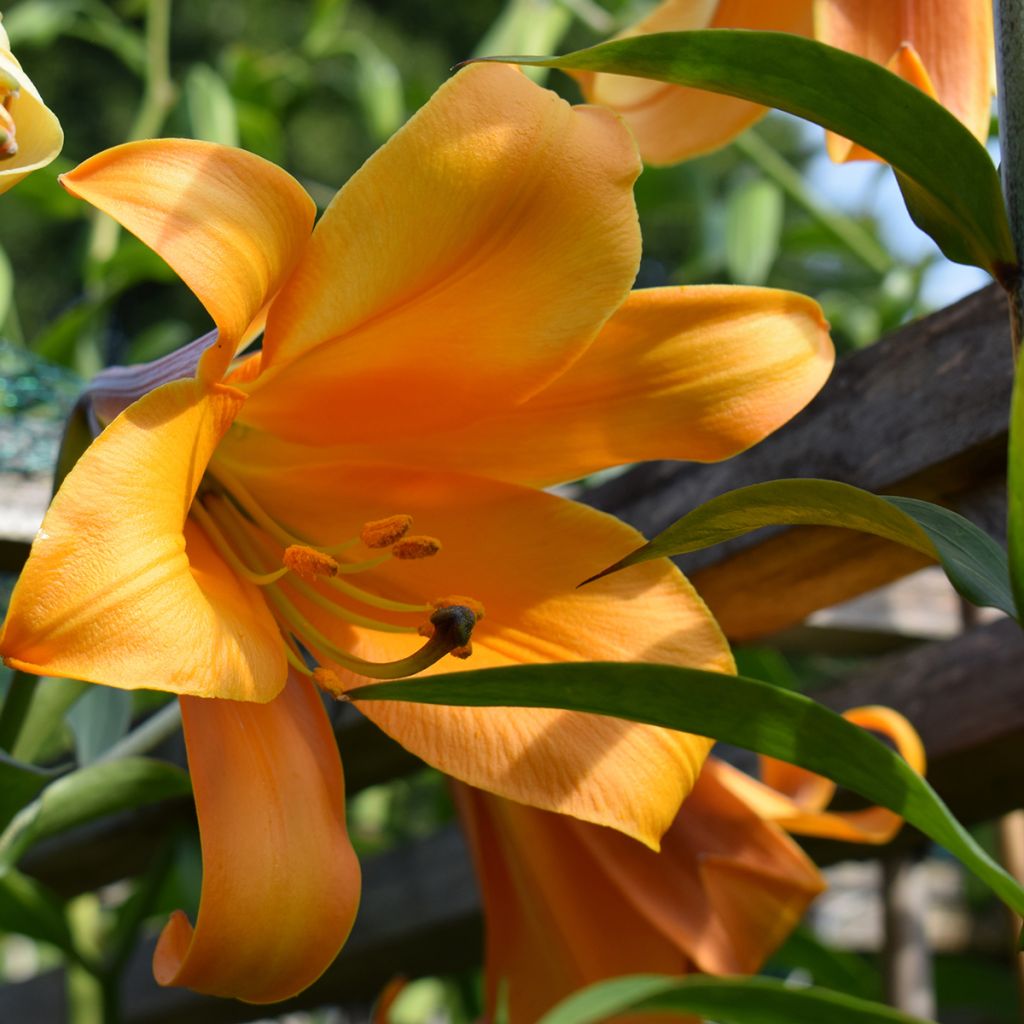

Lis trompette - Lilium x regale African Queen
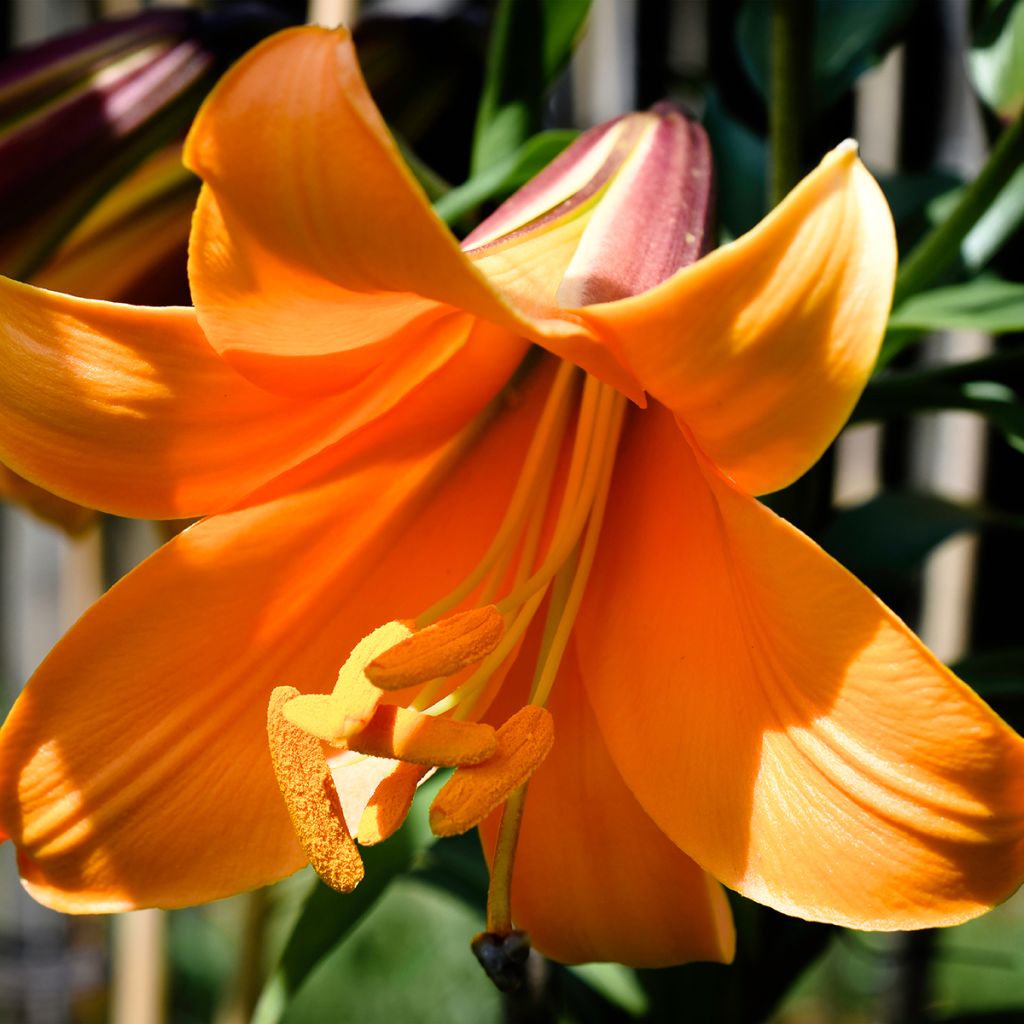

Lis trompette - Lilium x regale African Queen
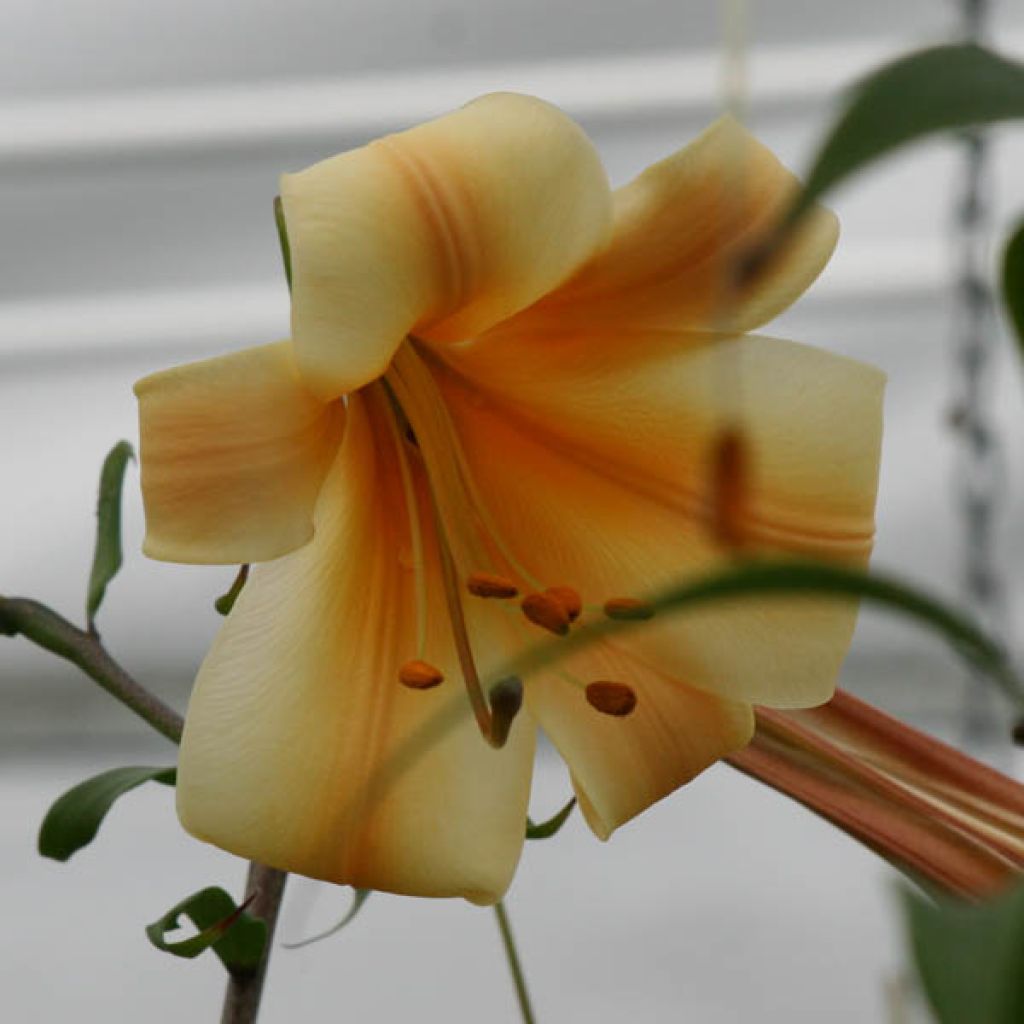

Lis longiflorum African Queen
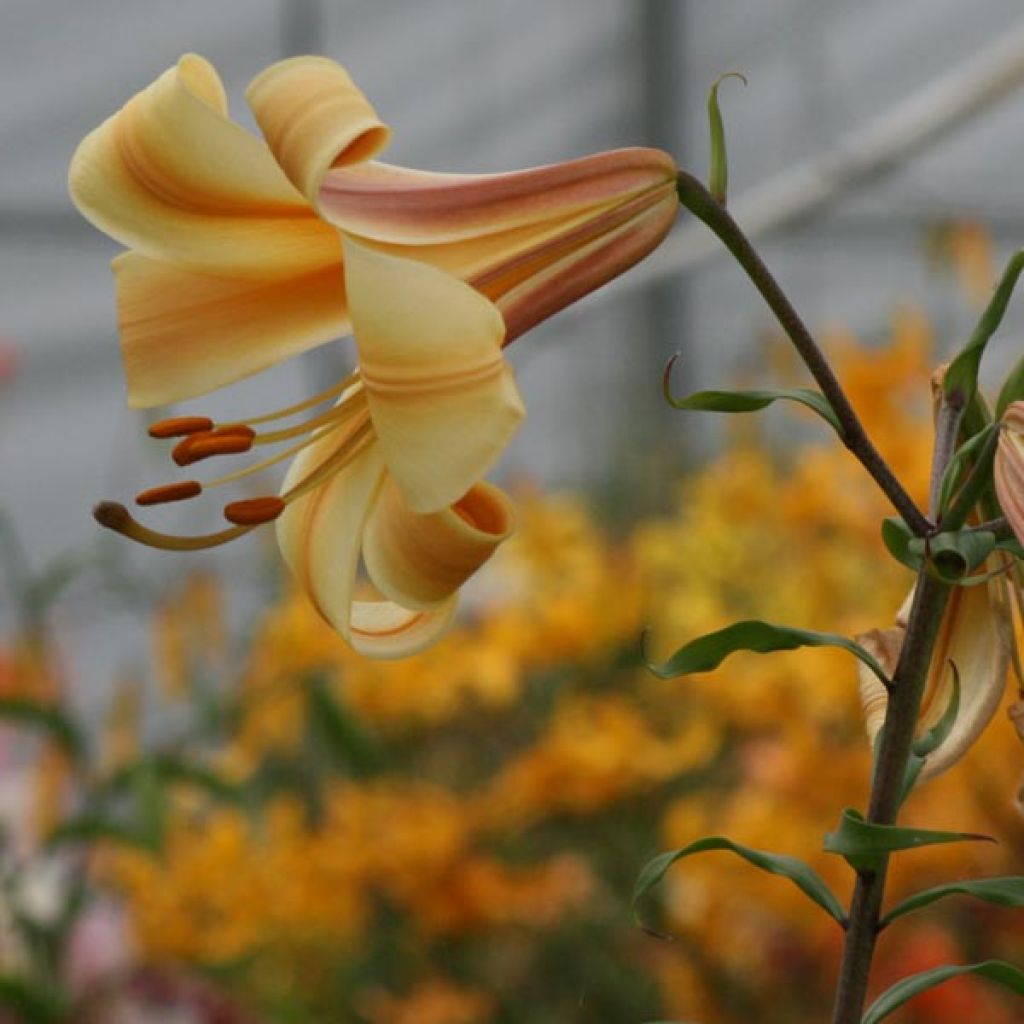

Lis longiflorum African Queen
Lilium African Queen - Lily
Lilium African Queen
Hybrid Lily
Beautiful, huge and healthy bulbs. I hydrated them and planted them in pots without fertilizer in the garage, waiting for the soil to warm up so I can plant them outside. From experience, if they are planted deep enough and mulched in winter, they can stay in the ground and become giants.
ELISAD, 13/03/2024
This item cannot be shipped to the selected country
Delivery charge from €5.90
More information
Schedule delivery date,
and select date in basket
This plant carries a 6 months recovery warranty
More information
We guarantee the quality of our plants for a full growing cycle, and will replace at our expense any plant that fails to recover under normal climatic and planting conditions.
From €5.90 for pickup delivery and €6.90 for home delivery
Express home delivery from €8.90.
Does this plant fit my garden?
Set up your Plantfit profile →
Description
African Queen trumpet lily is a robust variety with beautiful trumpet-shaped flowers in summer. The orange gradient ranges from dark yellow to apricot. Not only are they beautiful, but they also emit an intoxicating and heady fragrance. Easy to grow, reliable, and faithfully blooming like its parent, this lily, it is perfect in borders or even in large rock gardens. Great for cut flowers.
'African Queen' is a deciduous bulbous plant forming a narrow and upright clump from spring onwards. It belongs to the Liliaceae family. It is a hybrid obtained by cross-breeding the Royal Lily, native to Western China. This plant will reach a height of 120 cm (47in) when in bloom, and the clump will spread indefinitely over time, with the bulbs producing bulblets through vegetative multiplication. In June-July, clusters of orange to copper-coloured trumpets with a sumptuous fragrance appear. The stems are very sturdy, almost unbreakable. The lanceolate dark green leaves are glossy. This species forms roots on the underground part of the stems and produces numerous aerial bulblets in the axils of the leaves.
This Lily prefers humus-rich soil and does not like chalky, poorly drained, and heavy soil. You can plant it with perennial plants as it prefers to have its feet in the shade. The perennials will help prevent the stems from bending in the wind. This lily is ideal for borders and, of course, for bouquets.
Report an error about the product description
Lilium African Queen - Lily in pictures
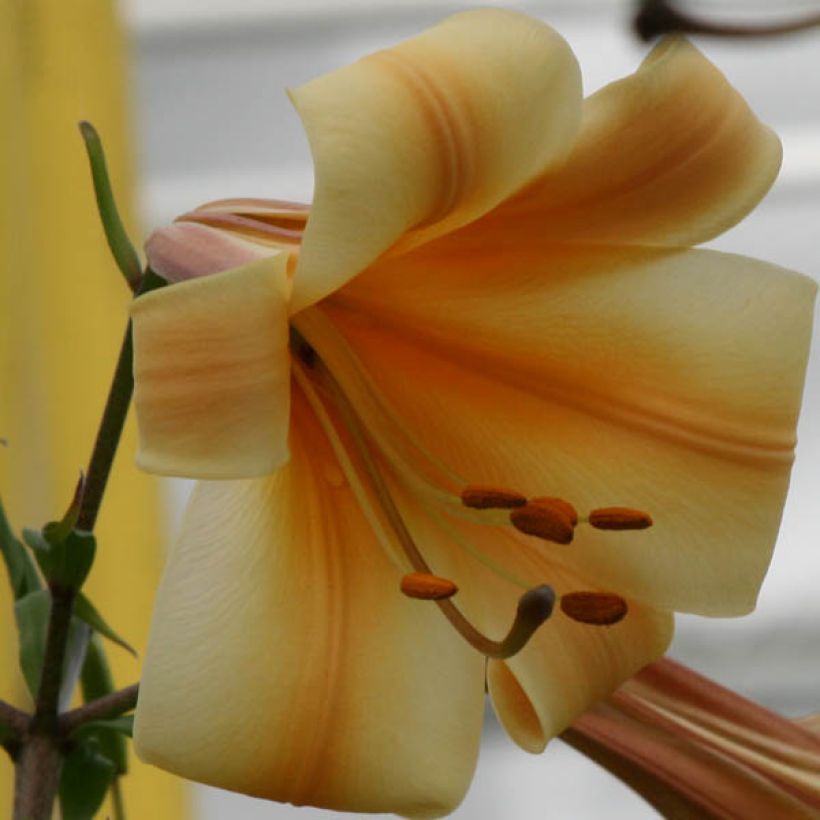

Plant habit
Flowering
Foliage
Botanical data
Lilium
African Queen
Liliaceae
Hybrid Lily
Cultivar or hybrid
Other Hybrid Lilies
Planting and care
The 'African Queen' lily does not like limestone or poorly drained and heavy soils. Plant the bulbs in full sun, preferably in spring, 15 cm (6in) deep in a pocket of soil mixed with leaf compost. Surround them with a layer of sand that will prevent rot and attacks from slugs, while allowing them to grow more easily. Mark the planting location, as vegetation only starts in April. Stake the stems when they reach 30 cm (12in) high. If red lily beetles appear, treat them immediately, as their larvae can devour all the leaves. The most effective method is to catch them manually, but be careful as they drop when touched. After flowering, it is a good idea to cut the faded flowers halfway to keep the bed beautiful during the summer.
Planting period
Intended location
Care
-
, onOrder confirmed
Reply from on Promesse de fleurs
Fragrant flowering bulbs
Haven't found what you were looking for?
Hardiness is the lowest winter temperature a plant can endure without suffering serious damage or even dying. However, hardiness is affected by location (a sheltered area, such as a patio), protection (winter cover) and soil type (hardiness is improved by well-drained soil).

Photo Sharing Terms & Conditions
In order to encourage gardeners to interact and share their experiences, Promesse de fleurs offers various media enabling content to be uploaded onto its Site - in particular via the ‘Photo sharing’ module.
The User agrees to refrain from:
- Posting any content that is illegal, prejudicial, insulting, racist, inciteful to hatred, revisionist, contrary to public decency, that infringes on privacy or on the privacy rights of third parties, in particular the publicity rights of persons and goods, intellectual property rights, or the right to privacy.
- Submitting content on behalf of a third party;
- Impersonate the identity of a third party and/or publish any personal information about a third party;
In general, the User undertakes to refrain from any unethical behaviour.
All Content (in particular text, comments, files, images, photos, videos, creative works, etc.), which may be subject to property or intellectual property rights, image or other private rights, shall remain the property of the User, subject to the limited rights granted by the terms of the licence granted by Promesse de fleurs as stated below. Users are at liberty to publish or not to publish such Content on the Site, notably via the ‘Photo Sharing’ facility, and accept that this Content shall be made public and freely accessible, notably on the Internet.
Users further acknowledge, undertake to have ,and guarantee that they hold all necessary rights and permissions to publish such material on the Site, in particular with regard to the legislation in force pertaining to any privacy, property, intellectual property, image, or contractual rights, or rights of any other nature. By publishing such Content on the Site, Users acknowledge accepting full liability as publishers of the Content within the meaning of the law, and grant Promesse de fleurs, free of charge, an inclusive, worldwide licence for the said Content for the entire duration of its publication, including all reproduction, representation, up/downloading, displaying, performing, transmission, and storage rights.
Users also grant permission for their name to be linked to the Content and accept that this link may not always be made available.
By engaging in posting material, Users consent to their Content becoming automatically accessible on the Internet, in particular on other sites and/or blogs and/or web pages of the Promesse de fleurs site, including in particular social pages and the Promesse de fleurs catalogue.
Users may secure the removal of entrusted content free of charge by issuing a simple request via our contact form.
The flowering period indicated on our website applies to countries and regions located in USDA zone 8 (France, the United Kingdom, Ireland, the Netherlands, etc.)
It will vary according to where you live:
- In zones 9 to 10 (Italy, Spain, Greece, etc.), flowering will occur about 2 to 4 weeks earlier.
- In zones 6 to 7 (Germany, Poland, Slovenia, and lower mountainous regions), flowering will be delayed by 2 to 3 weeks.
- In zone 5 (Central Europe, Scandinavia), blooming will be delayed by 3 to 5 weeks.
In temperate climates, pruning of spring-flowering shrubs (forsythia, spireas, etc.) should be done just after flowering.
Pruning of summer-flowering shrubs (Indian Lilac, Perovskia, etc.) can be done in winter or spring.
In cold regions as well as with frost-sensitive plants, avoid pruning too early when severe frosts may still occur.
The planting period indicated on our website applies to countries and regions located in USDA zone 8 (France, United Kingdom, Ireland, Netherlands).
It will vary according to where you live:
- In Mediterranean zones (Marseille, Madrid, Milan, etc.), autumn and winter are the best planting periods.
- In continental zones (Strasbourg, Munich, Vienna, etc.), delay planting by 2 to 3 weeks in spring and bring it forward by 2 to 4 weeks in autumn.
- In mountainous regions (the Alps, Pyrenees, Carpathians, etc.), it is best to plant in late spring (May-June) or late summer (August-September).
The harvesting period indicated on our website applies to countries and regions in USDA zone 8 (France, England, Ireland, the Netherlands).
In colder areas (Scandinavia, Poland, Austria...) fruit and vegetable harvests are likely to be delayed by 3-4 weeks.
In warmer areas (Italy, Spain, Greece, etc.), harvesting will probably take place earlier, depending on weather conditions.
The sowing periods indicated on our website apply to countries and regions within USDA Zone 8 (France, UK, Ireland, Netherlands).
In colder areas (Scandinavia, Poland, Austria...), delay any outdoor sowing by 3-4 weeks, or sow under glass.
In warmer climes (Italy, Spain, Greece, etc.), bring outdoor sowing forward by a few weeks.

































